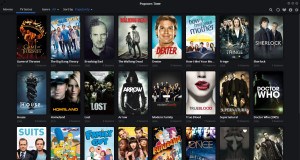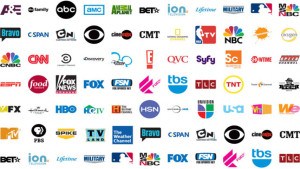Every week, I get several calls from people interested in getting their television show on the air. At least 75 percent of them ask this question: “Should I make a pilot or a sizzle reel?”.
After years of teetering back and forth, I finally have an answer. You should make the MVP, or “Minimum Viable Product”, which, in this case, is the sizzle reel. There is, however, an exception to the rule: If you have what we like to call “Fuck You” money (I think that’s fairly self-explanatory), then make the presentation pilot – because why the hell not?
For the sake of discussion, let’s work through the pros and cons of each option:
Sizzle Reel Pros:
- It’s less expensive to produce, meaning a lower overall investment and less risk.
- You can bring your idea to life much faster. Producing 2-3 minutes of content is way faster than producing a full-length episode.
- You can work out kinks by focusing on the main thrust of your show from a story and character perspective.
- People are more likely to watch it. In fact, the tighter it is, the better. Leave the audience wanting more. Lincoln once said, “If I had more time, I would have written a shorter letter.” The same can be said about a sizzle reel. The shorter and more concise, the better.
- The network and, if you have it, the name talent will want their stink all over it. This means that you are not overly investing in the show before you get feedback from the network or your star. Again, you’re minimizing risk.
Sizzle Reel Cons:
- It’s not a true representation of what your show can be. You have a vision in your head, and a sizzle reel likely won’t capture everything.
- There’s always a chance the network will want to see more. We have heard this exact sentence several times: “There’s something here, but we’d like to see more.” In some cases, you will get a budget from the network to make the full pilot, but that is very rare. Most of the time it’s on your production, and there is still no guarantee that they will like your show more once they see the pilot. In fact, by the time you finish your pilot, it’s highly likely that your contact has moved jobs, networks, or both.
- You don’t learn as much. No matter how long you have been making films and TV shows, there are always new things to learn about the stories you are telling and the characters you are working with. When you make a sizzle reel, you don’t get a chance to fully flex your creativity and ingenuity.
Presentation Pilot Pros:
- You get to make the show you want to make. If it’s great and it fits what the network is looking for, you can leverage it for more control, more money, or both.
- Making a television pilot is a huge accomplishment, especially if it’s professionally produced and packaged. It’s almost like having a master’s degree. No one can take it away from you, and it will likely lead to more opportunities even if the show does not get picked up. Not many people have the ability to make a professional looking television show. You’re now kind of a big deal.
Presentation Pilot Cons:
- Television pilots can be cost prohibitive. It’s not just the talent, the equipment and the crew that will cost you – you’ll also need a complete graphics package. A professional motion graphics package can run anywhere between $15,000 and $40,000, depending on the level of intensity and the quantity needed. Of course you can spend a ton more, but I wouldn’t spend more on a pilot unless you have oil money.
- Traditional broadcast networks seek content that fits with their brand and identity. Frequently, it’s hard to pinpoint what they want and what they need. When you make a pilot aimed at a traditional network without their feedback or insight, you might be wasting your money. This is the opposite of minimizing risk.
Making television shows is a very risky business. Respected industry vets make pilots every year, and most of them never find a home. If you believe in your vision and you want to see it through, make sure you have a great production partner who understands the game and can lead you down the best path possible. Prepare to spend the money to do it right. If you can’t do it right, don’t do it at all because at that point you are flushing your time and money down the toilet. Like anything (music videos, for example), you get what you pay for.




